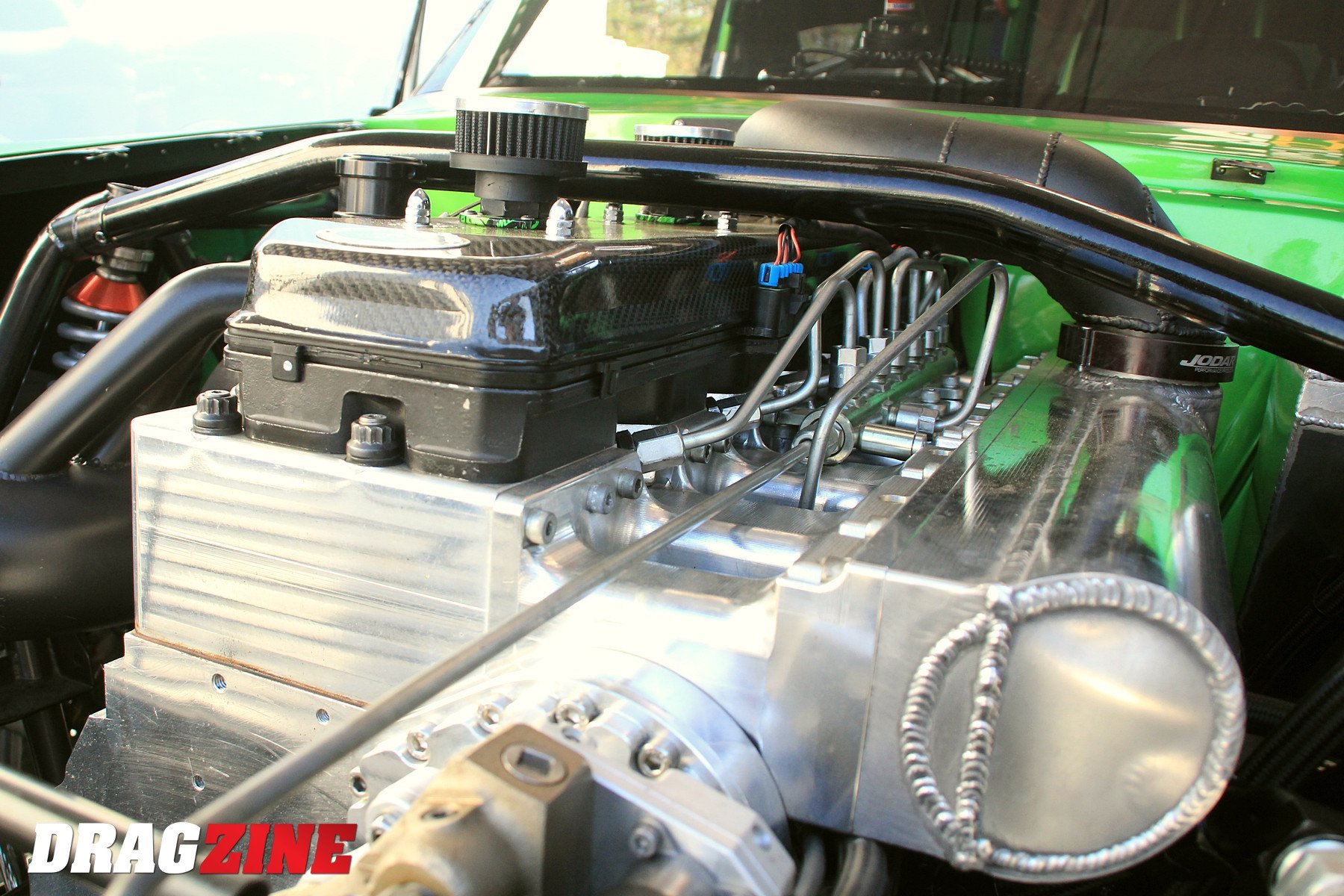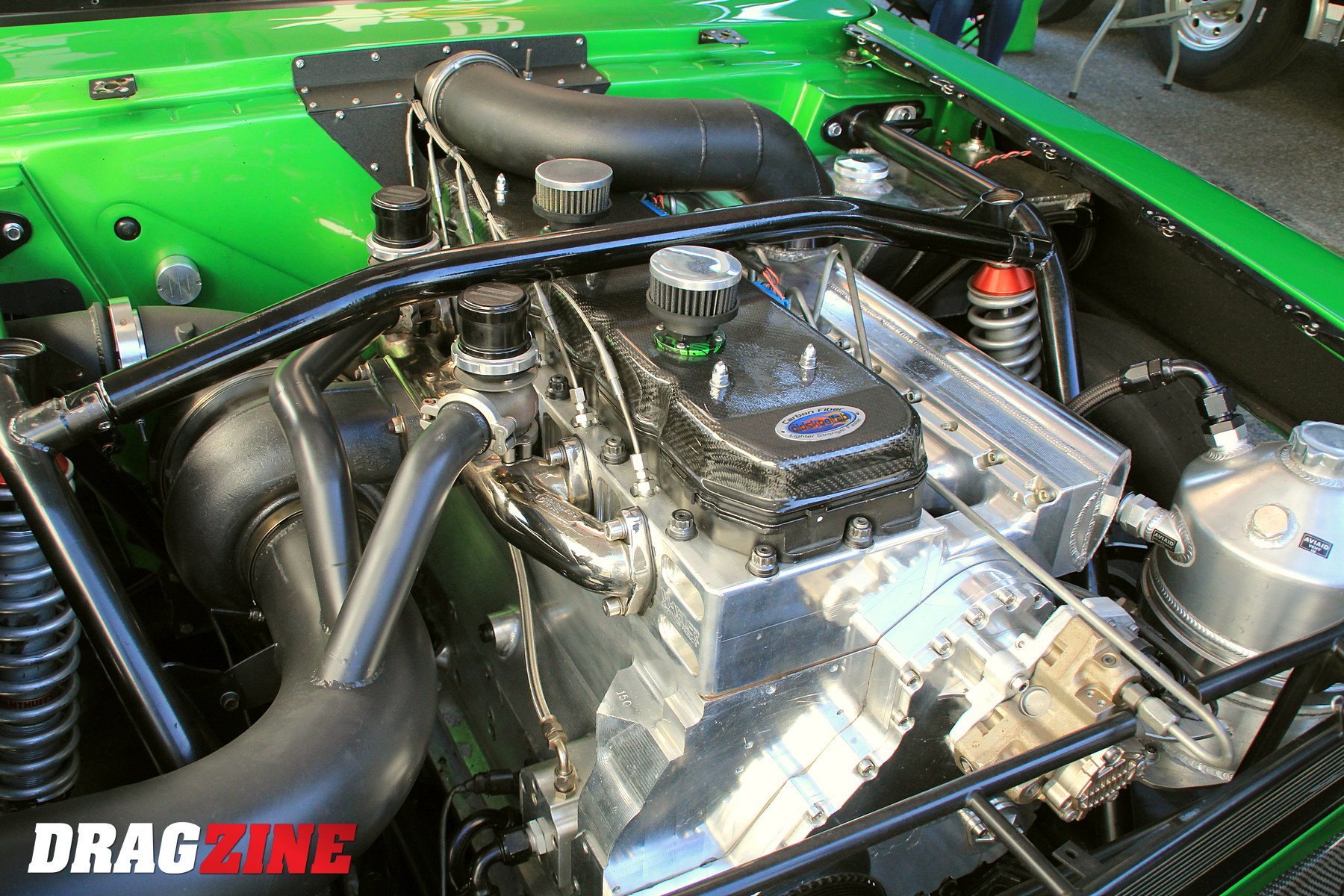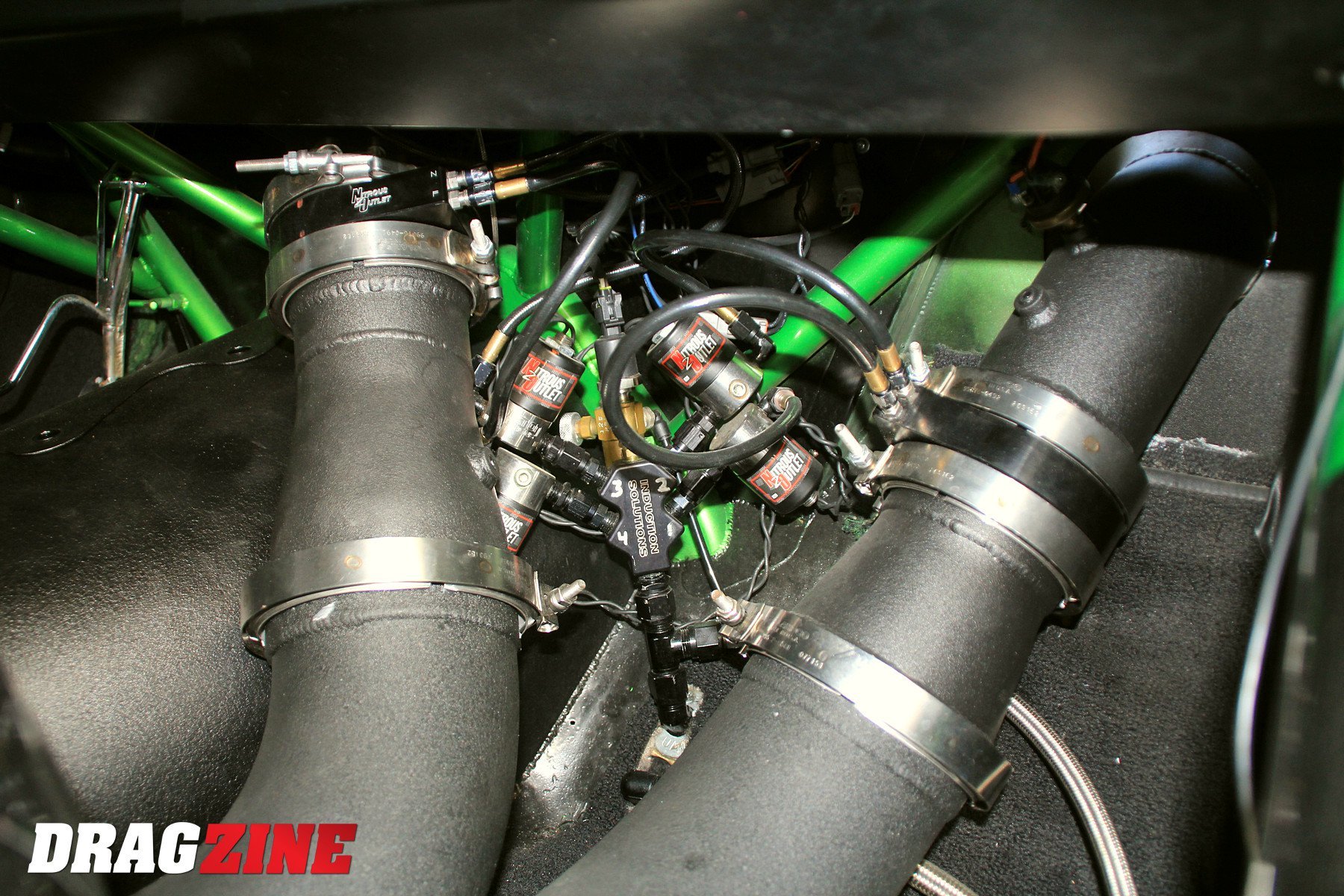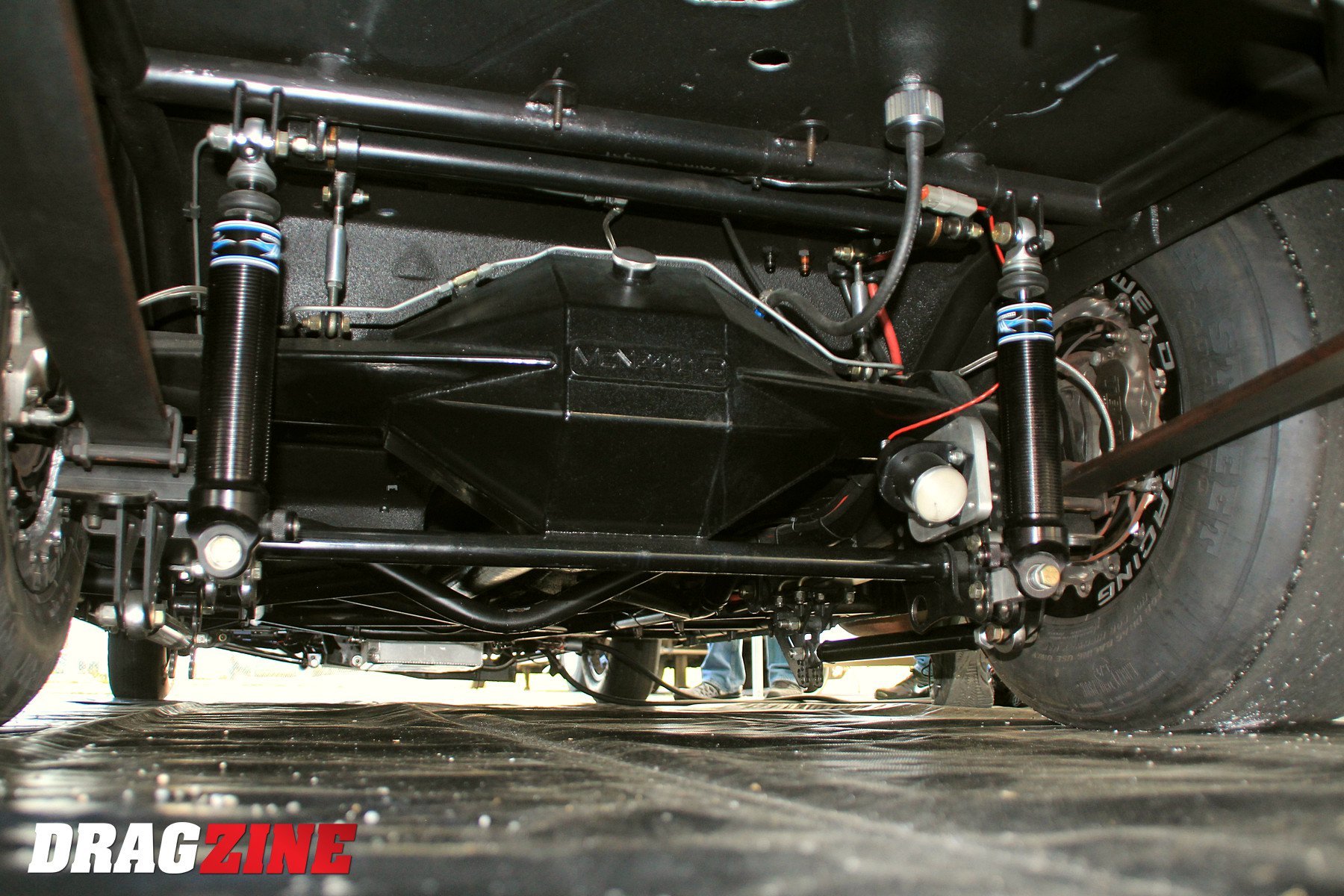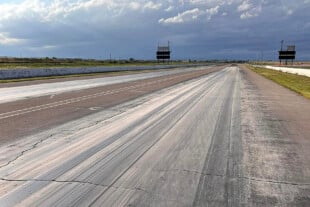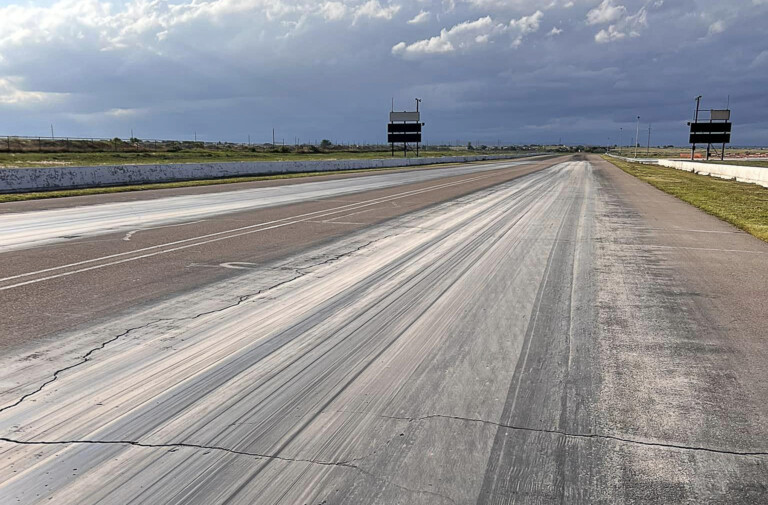The inaugural World Series of X275, part of DuckX Productions’ Sweet 16 2.0 at the South Georgia Motorsports Park, featured inarguably the strongest field of 275 drag radial machines in the sport’s history, as more than 80 entries battled it out for a record $50,000 payday.
Not only was it the quickest field — the national record was reset at 4.235 and it took an incredible 4.340 to crack into the raceday program — but it was perhaps also its most diverse. And while a rather traditional supercharged small-block earned the races’ top prize, it was a pair of one-of-a-kind machines with two fewer cylinder than every other car on the property that stopped fans and fellow competitors in their tracks.
Florida diesel speed-shop proprietor Ryan Milliken, driving his coal-rolling 1966 Chevrolet Nova, stunned everyone in attendance and those at home as he qualified sixth in the record field with 4.289-second, 170.88 mph hit in his Cummins diesel-powered machine that will go down as one of the most memorable feats in a weekend littered with them. Just two positions back in eighth was another one-off combination in the category — Titan Motorsports’ 1994 Toyota Supra, powered by a turbocharged, inline-six 2JZ, with veteran Gary White at the controls.
For Milliken, his incredible performance was the culmination of years of headaches and tireless effort — all of which began to bear fruit at Lights Out 10 in February when he and his Hardway Performance team finally got a handle on their combination.
The last three years have been figuring out how we get this car to go down this track. Everything that everyone else does doesn’t necessarily work for us, because our power delivery, power curve, torque output versus horsepower, is completely backasswards. – Ryan Milliken
“At Lights Out we went 4.45 in qualifying and then backed it up with another 4.45 in eliminations. We hauled the car home and put it in a display booth at an event — we decided not to race it since Sweet 16 was the following weekend. I changed the oil, put fresh tires on it, gave it a bath and in the first round of qualifying at Sweet 16 it went 4.45 again … so it was like a bracket car,” Milliken notes.
“I really didn’t know it was going to go that quick … it surprised the shit out of me. I always knew we had the power on tap to get there, but we had to figure out the entire combination to do it. The last three years have been figuring out how we get this car to go down this track. Everything that everyone else does doesn’t necessarily work for us, because our power delivery, power curve, torque output versus horsepower, is completely backasswards,” he explains. “Nothing works the same. Once we finally got the chassis figured out and showed the videos and data-logs to the guys at Menscer Motorsports, the only thing it was all telling us was that it wants more power. I thought, ‘I’ve been waiting three years for someone to tell me that.’
“So we moved the lock-up earlier into the run and put a little bit of power to it, expecting a big change, and it went 4.42,” Ryan continues. “That was a personal best, but I was expecting it to go a high-4.30. So I thought, ‘I guess I need to get more aggressive.’ This car has a really fine line between it being a dog and going 1.25 60-foot or 1.11 on the back tires trying to flip over backwards. So I really have to creep up on the spot where the car is really trying to go somewhere — we’re talking just moving the launch RPM by 10. I put a little power to it and in one pass we went from 4.42 to 4.32. That surprised the hell out of me. Then we looked at the data-log and determined it just wanted more power, and we went out and clicked off the 4.28.”
Milliken and crew chief Daniel Pierce backed the combination down for the warmer, sunny conditions of raceday in an attempt to go a 4.32-.33, but missed the setup and struck the tires early in their opening round matchup. But they’d already made their statement.
Milliken’s combination, the only one of its kind in X275, is a 6.8-liter Cummins (based on the production 6.7-liter) with an LSM billet aluminum block of full internal factory dimensions, bored .040-inches over. It sports a factory 6.7 Cummins crank, billet steel rods of stock dimension, Diamond pistons, a Hamilton roller camshaft, and Manton roller rockers. Wagler Motorsports provided the likewise factory dimension billet cylinder head with a factory exhaust manifold design, factory valve design, injectors, and injector feeds, and so on. Per the X275 rules, Milliken is permitted to use two power adders: a four-stage, .122-inch solenoid dry nitrous system coupled with an 88mm Garrett turbocharger.
“We’ve been running the same fuel quantity and power output for three years now, and we were just adjusting shocks or shift points or fuel cuts to fit the chassis setup,” he says. Milliken and team eventually figured out their anti-roll bar lengths were too short and also switched to two-inch longer extension shocks and it made all the difference — instead of tip-toe’ing through the early part of a run, they could get more aggressive like their peers.
“I wasn’t expecting nor prepared to go that quick. I hauled to this race thinking we might get lucky and hit a hail-mary and make the field — I didn’t expect to go number six and run quicker than the previous world record,” Milliken says.
Milliken is well aware of the attention his combination drew after its 4.28-second performance, noting, “No one has said anything direct, but I heard a guy in a video say, ‘that thing needs more weight thrown at it.’ But I checked with John Sears and per the track’s scales, I was the heaviest X275 car on the property. We were 3,435-pounds (his minimum weight is 3,350). Putting any more weight to my chassis would make it more dangerous and make it more difficult to race, since we’re on leaf springs.”
On the opposite side of the coin, White’s Supra was among the lighter cars in the category, racing at 2,800 pounds with its 192 cubic-inch, 88mm single turbo combination. Not only does it look different, but its tone is unmistakeable among a sea of turbocharged, supercharged, and nitrous-fed V-8’s (and one diesel).
White qualified with a 4.307, marking the quickest import run ever on 275 radials.
“Our goal was to qualify, but we definitely didn’t expect to go as quick as we did,” says Titan Motorsports’ Nero Deliwala. “We’ve never been that quick before, but we felt like we had a car that we could show up with and qualify. We just didn’t realize how difficult it would be to even get in the show, which came down to a couple of sessions where you needed to make a perfect run.”
After a tire-spinning effort in the opening session, White carded a 4.364 at 171 mph and progressively improved from there. In Friday evening’s final make-or-break session, he found himself sitting on the bump spot — Deliwala commenting, “we felt we had a car that go 4.30s and that that would qualify us — we never expected a .34 to be on the bump spot. Once we ran the .34 we were partying because we were sure it would help up. Then we saw our spot drop down the list to the point we were on the bump. When Gary pulled up Friday night to make his run, we were on the bump and I knew if it didn’t go A-to-B, we were probably getting knocked to 18th or 19th.”
His 4.307-second lap was a shocker, certainly to onlookers but, to a degree, even to the Titan camp, who had been 4.35 in testing in conditions even better than those at the Sweet 16. And while their elapsed time was outpaced by the supercharged small-blocks of Rich Bruder and Rob Goss by some .07-seconds, White reset the X275 speed mark at staggering 174.55 mph that got everyone’s attention.
The Sweet 16 marked Titan’s X275 debut with the unibody Supra — previous competitive outings and testing, however, gave indication they had the steam to compete on the class’ biggest stage.
“We had some confidence, because we had gone testing. We had an idea of what the car was capable of on a non-radial-prep surface,” Deliwala says.
…these inline-six imports don’t make any torque, so getting a perfect torque converter combination is extremely difficult. So the clutch gives us a bit more flexibility to make changes track to track, run to run. – Nero Deliwala
The Supra utilizes a billet, aftermarket 2JZ block filled with aluminum rods, CP pistons, Ferrea valvetrain components, and a custom Titan camshaft, mated with a production cast cylinder head. Crew chief Erik Luzinski tunes the whole package through a FuelTech FT600 ECU. Intriguingly, White’s machine was the only manually-shifted, clutch-equipped car in the field on a tire and a track-prep process that’s long defied the use of such.
“I have an awesome clutch and chassis guy in Erik, and so it only made sense for us to keep running the clutch. Not to mention, these inline-six imports don’t make any torque, so getting a perfect torque converter combination is extremely difficult. So the clutch gives us a bit more flexibility to make changes track to track, run to run. Plus we can make gearing changes with the transmission.”
The car sports a Liberty five-speed with a quad-disc clutch.
Deliwala says the feedback was tremendous from their racing counterparts and the fans on hand at the Sweet 16 in regards to their unique combination.
“People were really surprised [to see us in the field]. Many had never seen that engine combination run, let alone that competitively. I think people were also extremely surprised we would show up at the biggest-paying racing in X275 and didn’t even know we had a car for the class at all, much less a competitive car.”
White advanced to the elite eight with a 4.34 in round one and outran number one qualifier Rob Goss in the second round, 4.32 to 4.36, but succumbed to a sizable holeshot on the starting line.
He notes there is no question Titan Motorsports will be back for more radial tire action, sharing. “We’ll be back, 100-percent. I absolutely love Donald’s races, it’s very well put-together and his marketing is extraordinary.”






